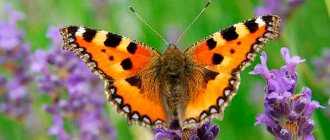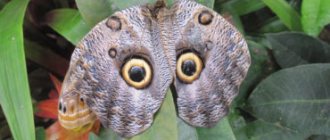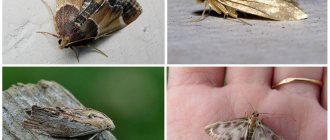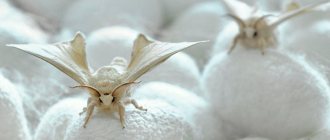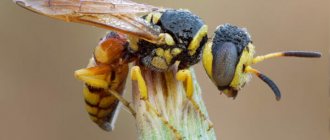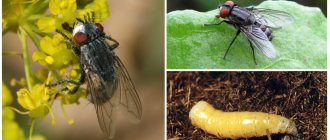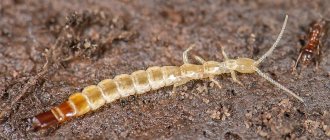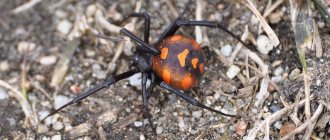- Wild animals
- >>
- Insects
The peacock butterfly has a very beautiful pattern on its wings, which is why it is sometimes even kept at home. She is unpretentious and tolerates captivity well if the conditions are suitable. In nature, it can be seen in almost any warm month, but they are much less common than urticaria or cabbage, especially in cities.
Origin of the species and description
Photo: Peacock butterfly
Lepidoptera appeared a very long time ago: in the early Jurassic period, almost two hundred million years BC. Gradually they developed, more and more species appeared, and they actively spread across the planet along with the spread of flowering plants across it.
During evolution, the formation of a proboscis occurred, they began to live more time in the form of an imago, and more and more species with large and beautiful wings appeared. The final formation of many modern species is attributed to the Neogene - at the same time the peacock eye appeared.
Video: Peacock butterfly
It is, along with approximately 6,000 other species, part of the large family of nymphalids. It looks similar to urticaria, which is not surprising, because they are in the same genus. His wings are the same black and orange tone, and stand out only with a brighter and more beautiful pattern.
The description was first made by Calus Linnaeus in 1759. Then it received the specific name Papilio io. Then it was replaced first by Inachis io - this name was taken from the mythology of Ancient Greece, and combined the name of King Inach and his daughter Io.
But ultimately, this symbolic combination had to be replaced with Aglais io in order to correctly determine the place of the species in the classification. There is also a night peacock eye, but this species is not closely related: it belongs to a different genus and even family.
Nutrition
The main product in the diet of the adult peacock butterfly caterpillar is nettle. If there are no nettles, it can feed on common hops, raspberries, and willow leaves. For a butterfly, the most important and only food is plant nectar.
However, there are butterflies that are an exception to this. For example, the night peacock butterfly does not need food at all; they are characterized by a state of aphagia, in which living beings do not take food. The question of how they can exist and where they get their energy arises among many curious people. In fact, everything is very simple.
Peacock butterfly caterpillar eats leaves
While still a caterpillar of the peacock butterfly , it persistently saturates itself with all useful substances, hence its fame as a very voracious creature. The caterpillars get so carried away with their meal that they eat the entire plant. The choice of plant depends entirely on the insect’s sense of touch.
Appearance and features
Photo: Night peacock butterfly
It is not difficult to distinguish butterflies from other butterflies; this can be done by the pattern on the wings - on each of them in the corner there is a yellow circle, inside of which there is another blue one. It really does look like an eye. The main color of the wing looks like hives; a rich orange tone predominates.
But the opposite side of the wings looks completely different: it is dark gray, almost black. This coloration makes the butterfly fly like a dry leaf and allows it to remain almost invisible to predators on tree trunks when it hibernates or simply rests and closes its wings.
Their span is larger than average - about 60-65 mm. They have a jagged outer edge with a light brown stripe running along it. The body is plump, like other types of urticaria, and has a developed oral apparatus with a proboscis.
The butterfly has compound eyes of a complex structure. There are six legs, but only four are used for walking, and the front pair is poorly developed. Sexual dimorphism is pronounced: females are much larger than males.
Interesting fact: The brightness of the butterfly's color is determined by how warm the weather was during pupation and development of the pupa. If it was cool, the wings will appear paler, and in very warm weather the shade will become especially saturated.
Now you know the difference between a daytime peacock butterfly and a night one. Let's see what the bright daytime butterfly eats and where it lives.
Features and habitat
This incredibly beautiful butterfly has a wingspan of at least 65 mm. You can find such beauty in temperate and subtropical zones. They are found in Eurasia and on the islands of Japan. The butterfly prefers meadow areas, forest edges, and steppes. You can spot the peacock butterfly in orchards, city parks and ravines.
The color of this amazing insect is dominated by red-brown tones, with rich spots at the corners of the wings, very much reminiscent of eyes. The description of the peacock butterfly, especially its colors and those spots on the wings, is very reminiscent of the description of a peacock feather, hence the name of the insect.
The body of the insect is black with reddish tints. The females of these butterflies are usually slightly larger than the males. In nature, there are two most common types of peacock butterflies - day and night. The diurnal butterfly was discussed above.
Moth peacock eye
What can you say about the great peacock eye moth ? The color of these two insects contains spots in the form of eyes on a peacock feather. Large peacock eye butterfly. Sometimes it is even confused with a bat or bird, especially at night.
This butterfly became known to people not only due to its color and size. Observing this creature, scientists determined that this insect has a unique sense of smell, which is not characteristic of all butterflies.
Initially, it was quite difficult to believe in this discovery. But the assumptions were still confirmed in practice. It turns out that this butterfly senses the aroma released by the female pupa. This ability is characteristic of several other species of butterflies, which is very rare.
This amazing insect is most often found in nettles. The butterfly's activity period starts from spring to mid-autumn. Butterflies love warmth. In the subtropics they are also awake in winter. In countries with a more temperate climate, they find another way out of the situation - they hibernate, turning into adults.
Where does the peacock butterfly live?
Photo: Day peacock butterfly
Over large areas, including almost all of Europe and most of Asia. These butterflies prefer temperate and subtropical climates, so they are easy to find in Russia, as well as in the rest of Eurasia, except for the tropical south and deserts, as well as the tundra.
Their concentration is especially high in Germany, and in Central Europe in general. They also live on many islands located around Eurasia, for example, in Japan. But not at all: for example, the peacock’s eye did not reach Crete. For some reason, these butterflies are not found in North Africa, despite the climate suitable for them.
Most often they can be found in forest clearings and garden plots - they love areas close to forests, but at the same time well lit by the sun and rich in flowers. They rarely fly into the thick of the forest because there is not enough sun there, and there is a risk of damaging the leaves by flying through too dense vegetation.
They can also live in moderately mountainous areas up to an altitude of 2,500 meters; they are no longer found higher. They love forest parks, and even more so city parks; they are found in gardens, clearings, as well as along the banks of lakes and rivers - in short, while walking in nature you can meet this butterfly even in the city. But their numbers are clearly orders of magnitude lower in comparison with the same urticaria.
Often the peacock eye migrates over long distances in order to find a more suitable habitat: they can fly tens and even hundreds of kilometers, although this takes them a lot of time - the butterfly cannot overcome a long distance at once, it needs to replenish its strength with nectar and rest, basking in the sun.
What does the peacock butterfly eat?
Photo: Peacock butterfly
Nectar from numerous plants.
Among them:
- sivets;
- elder;
- dandelion;
- thyme;
- thistle;
- marigold;
- felt burdock;
- clover;
- marjoram;
- and many others.
Most of all he loves buddleia. Nectar is the main and almost the only source of vitality for an adult butterfly, but in addition to it, the peacock’s eye is also attracted to tree sap - that’s why they can often be seen on trees drinking it.
Another drink they love is the juice of fermented fruits; it is often fed to butterflies in captivity, because it is relatively easy to obtain. To feed the butterfly, you can dilute honey or sugar in water - sometimes small pieces of fruit are also added to this solution. A butterfly in captivity needs to be fed daily.
For caterpillars, food plants are:
- nettle;
- hop;
- raspberries;
- willow;
- broom;
- hemp.
Interesting fact: A butterfly can overwinter in a warm room, but in this case its life processes will not slow down sufficiently and will be too active. As a result, she will either come out of hibernation already old and will fly for only a short time, or even die during hibernation.
Therefore, if there is a butterfly in your apartment in winter, you should carefully take it out and place it in a secluded place, for example, in the attic. Then her hibernation will go well.
Types of insects of the family and their differences
The peacock butterfly is divided into 18 subfamilies. A prominent representative is considered to be a species called chocolate. Her wings are colored shades of brown with blue eyes. The Saturnia butterfly stands out for its size and characteristic shaggy antennae. The blue-eyed butterfly is the most recognizable among the sisters. The wings are painted bright orange, large blue eyes are surrounded by a golden halo.
You can distinguish one species from another by how many eyes the butterfly has. The second difference is the period of wakefulness. The diurnal peacock eye collects nectar from sunrise to sunset. The night one differs from its brother in its discreet appearance. Begins activity at sunset.
Peacock butterfly
Features of character and lifestyle
Photo: Daytime peacock butterfly
The adult form appears at the beginning of summer and enjoys life until September - more precisely, until the autumn cold arrives. These butterflies spend a significant part of their lives in flight, and it can be either active or passive - thanks to their wide wings, they save energy by simply gliding.
They are active only in the light of the sun - as soon as it starts to get cold in the evening, they look for a place to spend the night. They love sunlight and warmth very much, because they require a lot of energy to fly, so they can bask in the sun for a long time before starting their next flight.
They also need good weather to fly. Therefore, if rainy and cold periods in the summer drag on, the peacock’s eye enters diapause - the butterfly falls into a short summer hibernation. She usually spends up to a week in it and returns to active life immediately after it becomes warm and sunny again.
The peacock's eye is a real long-liver; in total, not counting periods of hibernation, it can live up to a year. After the onset of cold weather, it goes to wintering. It is noteworthy that in particularly warm areas, a peacock’s eye can overwinter a second time and wake up from hibernation again in the spring.
Thus, this butterfly can be found in the subtropics throughout most of the year - from March to October. Of course, in temperate latitudes this is much less likely; in the spring, only butterflies accidentally awakened by a thaw can be found, and they fly for only a short time.
Alas, death will probably await them, because a butterfly that wakes up ahead of time spends a lot of energy and cannot replenish it in the required amount - although sometimes it manages to find shelter and continue wintering in order to wake up again when it becomes really warm.
To overwinter, she needs to find a place where it will not be as cold as in the open air, but not warm either: she can climb under the bark of trees, deep into the forest floor, into balconies and attics. The main thing is that this place is protected from the cold and predators.
During hibernation, the butterfly can withstand freezing temperatures, although their exposure is undesirable. But she will not be able to react to the attack, nor will she be able to replenish her reserves of nutrients - so she needs to choose a secluded place and stock up on them in advance.
Lifestyle
The peacock eye is a butterfly that is active during the daytime. As soon as the sun goes down, the insect looks for shelter to spend the night. The insect spends most of the day in flight. She can fly by flapping her wings, or simply float in the air while maintaining her strength.
During their flight, butterflies spend a lot of energy, which they replenish by basking in the warm rays of the sun. That is why it is much easier to see them on a sunny day than on cloudy weather, when they prefer to remain alone, saving energy.
Moreover, if the cool rainy period drags on, the butterfly may go into short-term hibernation. The state of suspended animation lasts up to 5–7 days, and as soon as the sun comes out and the air warms up, the butterfly returns to active life.
Butterfly wintering
One of the features of this species is the wintering of adult individuals. The second generation, born at the end of August or September, with the onset of cold weather begins to look for shelter where they can wait out the winter. A heap of fallen leaves, the space between the trunk and bark of a tree, a crevice in a wooden building, an attic or a balcony can become a shelter for a Peacock's eye.
Having found shelter, the butterfly folds its wings and falls into a stupor. Her life processes are suspended. She spends the winter in this state and wakes up in the spring, when the air warms up enough. An early thaw is very dangerous. The insect wakes up and flies out of its shelter, but very soon dies from returning frosts or from hunger. Only in rare cases does a butterfly manage to find a new home and continue wintering in order to wake up with the arrival of a real warm spring.
Defense mechanism
Like other butterflies, the Peacock Eye has many enemies. These are birds, insect predators, lizards, rodents. When attacked by an enemy, the insect is often saved by its unusual colors. The butterfly suddenly opens its wings and suddenly bright eyes appear in front of the hunter. Such a picture disorients the attacker for some time, and the butterfly manages to fly away.
Reproduction and lifespan
The mating process in Peacock-eye butterflies is preceded by a courtship period, which consists of joint flights and mating dances. After fertilization, the female lays 100 – 300 eggs. Laying is most often done on the back side of the leaves of the food plant.
After 7–12 days, larvae appear. Peacock eye caterpillars are black with white dots and their entire body is covered with hard spines. Caterpillars live in large broods and actively eat most of the day, sometimes stopping for a short rest. The larval stage lasts 25–30 days, during which time 5 molts occur. Before pupation, the caterpillars crawl away.
Caterpillar
The pupal stage of the peacock eye lasts 10–15 days, after which an adult butterfly emerges from the cocoon.
How long the Peacock butterfly lives depends largely on weather conditions and climate. But in general, representatives of this species are considered long-livers. They can live for about a year, which is a huge period of time for lepidopterans.
Social structure and reproduction
Photo: Pair of peacock butterflies
These butterflies live alone. When the breeding season begins, the males divide the territory among themselves, after which each one waits for the female to appear. When this happens, he begins a mating ritual, which includes flying together with mating dances. Butterflies also spread pheromones around themselves, which make it easier for them to find each other.
As a result, the female is fertilized and lays a hundred or several hundred eggs, almost always on a nettle. They take a week or two before the caterpillars emerge - faster in warm weather and longer in cold weather.
These insects are characterized by complete transformation. The first generation caterpillars appear in May, and the second in mid-summer. At first they remain in the brood, and when they grow up, they crawl away from each other and begin to live separately.
The caterpillars are dark in color and covered with long spines, although in reality they offer little protection from predators, but are designed to at least scare away some of them. The caterpillar really looks quite unapproachable, but predators are already accustomed to this species, although it can really have an effect on young and not particularly hungry ones.
In total, the peacock eye lives in the form of a caterpillar for about a month, and its main activity during this time is feeding. She chews the leaf almost continuously, and grows 20 times, her weight increasing even more. Then it pupates and spends 10-20 days in this form, depending on the weather - as in the case of the transformation from egg to larva, the warmer it is, the faster it passes this form.
The pupa can be attached to tree trunks, fences, walls; depending on the color of their surface, its color can also vary, mimicking its surroundings - it can be from light green to dark brown. The pupa, like the caterpillar, has spines.
When development ends, finally breaking the cocoon, the crown of the butterfly's development, the imago, its adult form, appears. She will need very little time to get used to the wings, after which she will be completely ready to fly.
Natural enemies of peacock butterflies
Photo: Peacock butterfly
Butterflies have many enemies in all forms - they are in danger at any stage of life. Adult butterflies suffer less than others, but even they often die in the claws or beaks of predators.
They are hunted by:
- rodents;
- birds;
- large insects;
- reptiles.
It was to protect against these enemies that the peacock’s eye acquired such a bright color. It would seem that she does not help with this at all, on the contrary, she gives out a butterfly! In fact, when her wings are open, she is always alert and ready to fly away from a predator, but when she is resting, she closes them and merges with the bark of the trees.
If the predator nevertheless noticed her and attacked, she sharply opens her wings, and for a moment disorients him due to the sharp change in color - this brief moment is sometimes enough for salvation. Most often, butterflies die because of birds, which are much faster and capable of grabbing them even in flight. It is more difficult for other predators to do this, so all that remains is to lie in wait for them.
Caterpillars are hunted by the same predators as adults, and even more actively - caterpillars are more nutritious, and are also much less mobile, and certainly cannot fly away. Therefore, a significant number of them are exterminated - it is already a great success to survive to the cocoon, and even more so to the imago, since the pupa is even more defenseless.
As in the case of adults, caterpillars suffer most from birds, which love to fly into their clusters and eat dozens of them at once. But reptiles and rodents are not far behind: it is difficult for them to catch an adult butterfly, but a larva is a completely different matter. They are even threatened by ants, who, through coordinated actions, can kill a caterpillar that is much larger than them.
They still have ways to protect themselves from enemies: they can take a threatening pose, as if they are going to attack themselves, they begin to crawl in all directions, if they still live together - so at least part of them will survive, curl up into a ball and fall to the ground. They may also secrete a green liquid, designed to scare away predators.
Daytime peacock eye description and photo
Among the many insects, butterflies are the most striking representatives that people never tire of admiring. The peacock butterfly immediately attracts attention with its huge eyes. These are 4 bright large spots on the wings of an insect, which are very reminiscent of the spots on a peacock’s tail, for which the winged insect got its name. Spots are not only a decoration for the insect, they serve as a means of protection against enemies. When a bird approaches it, the butterfly flaps its bright wings and the bird flies away in fear.
The peacock butterfly is a diurnal species of the Nymphalidae family. Butterflies belong to the arthropod insects of the order Lepidoptera . The color of their wings is red-brown with a black-red edging along the edge. In the four corners of the wings there are large bluish-blue eye spots. Under the wings a shade of black-gray color is clearly visible. The photo clearly shows that the butterfly has a simple wing shape with shallow cutouts along the edges. The body is black and only in the upper part you can see a reddish tint.
Females are larger in size, their fragile wingspan reaches 5–6 cm. In males it is slightly smaller and can reach a maximum of only 4.5–5.5 cm. The color intensity of butterflies always depends on the air temperature at the time of pupation.

